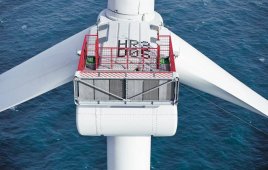Keith Martin, in Washington with Norton Rose Fulbright
At least a dozen provisions in a massive tax-cut bill that cleared the US Congress in mid December will affect transactions in the power and broader infrastructure markets. Tax Credits
The existing tax credits for renewable energy remain unchanged. The House had voted to make it tougher for renewable energy projects to be considered under construction in time to qualify for tax credits. The final bill leaves in place the existing phase-out schedules for tax credits and the existing Internal Revenue Service policies on what it means to start construction. The House wanted to roll back production tax credits for wind projects to the 1992 level of $15 a megawatt hour and not to adjust the credit amount for future inflation. The change would have applied to projects that start construction in the future.
The House also wanted to eliminate a permanent 10% investment tax credit for solar and geothermal projects after 2027. None of these provisions made it into the final bill. Tax credits for “orphan” technologies — fuel cells, CHP projects, geothermal heat pumps, fiber-optic solar property — and for nuclear power plants were not extended. Most of these tax credits expired at the end of 2016. Nuclear power plants must be in service by the end of 2020 to qualify. The House wanted to extend the already-expired tax credits and to waive the in-service deadline for new nuclear power plants, but the Senate, facing harder choices to make the math for its bill work, jettisoned them in favor of taking some of them up in a separate “tax extenders” bill before year-end.
Corporate tax rate
The corporate tax rate will be reduced from 35% to 21% starting in 2018. The change should make operating projects more valuable because the owners will be able to keep more of the revenue from electricity sales after taxes.
For the rest: https://goo.gl/MsnPVp
Filed Under: Financing





